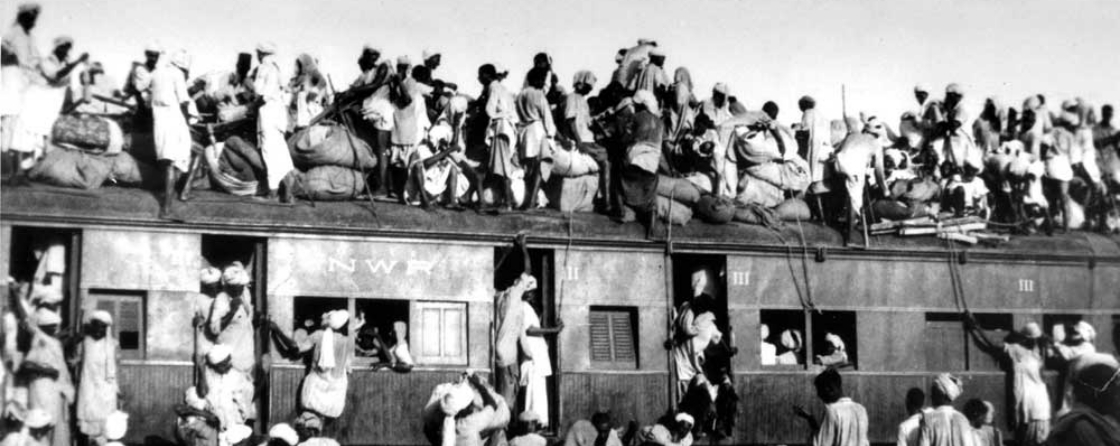In the third instalment of a monthly op-ed series in the Hindustan Times entitled ‘Clearing the Air’, Professor Navroz K Dubash examines the elements of a long-term plan that could address the root causes of India’s air pollution crisis.
We are in the midst of that season in north India, when air quality debates die down, and parents send their children out to play. After all, the air quality index suggests “moderate” and “poor” air days, with hardly a “very poor” or “severe”. Of course, at moderate levels, the level of PM2.5 is still 2.5-3.5 times the World Health Organization (WHO) safe levels, and poor is 3.5-5 times higher. But given what Delhi feels like in the winter months, February and March seem positively inviting. After all, one cannot worry about air quality all year round, right?
Unfortunately, wrong. We may have no option but to send our children out to play, but we should also be simultaneously working hard on long-term solutions. During the apocalyptic winter months, justifiable cries of alarm translate to reactive measures: an (ineffectual) firecracker ban, throwing money at “Happy Seeders” to stop crop burning, and periodic bans on truck traffic. Some short-term response measures are needed for emergencies. But to make a real dent in the air problem requires measures to address the deep-rooted causes and not simply react to the symptoms. This is best done when we are not in panic mode.
The recent National Clean Air Programme (NCAP) is a missed opportunity to establish a long-term strategy. It sets a target without a realistic road map, proposes a city-based approach that downplays regional effects, and adopts a something-for-everyone approach rather than prioritising action. In the midst of election season, formulating a serious approach to air quality plan remains a missed political opportunity. So, what are elements of a long-term plan that truly starts the long, slow business of addressing root causes?
First, a truly effective strategy will place the challenge of ensuring compliance and enabling enforcement at the heart of pollution regulation. Too often, actions are written as if enforcement is a secondary challenge when it is actually primary. For example, to limit industrial pollution, will a combination of monitoring technology, strengthened laws, and enhanced capabilities of pollution control authorities work? Or is the enforcement challenge so great that we should simply force industries to switch to cleaner, if costlier, fuels, which may be easier to monitor? The answer is not entirely clear, but this is the question that should inform strategic policymaking.
Second, many pollution sources need multifaceted responses. For example, waste burning may best be addressed by upstream shifts in consumer behaviour, to limit waste at source. Transport emissions need a mix of public transport investments, behavioural change in transport patterns, and new transport technologies such as electric vehicles. Reactive solutions, such as banning waste burning or certain forms of transport, are but band aids.
Third, many solutions require negotiated solutions to political and economic challenges. Crop burning is unlikely to be solved by a technical solution if not burning crops costs more. The resolution lies in political negotiations around cropping pattern shifts, agricultural support policies and water use policies. Political negotiations take time and need to start now, before pressure for quick fixes sets in.
Fourth, a city-by-city approach is invariably limited. Much pollution occurs outside cities — by industry, brick kilns, power plants and crop burning. City boundary based regulation only encourages emissions leakage such as relocation of industries to the outskirts. India has to develop regulatory institutions that operate at the level of the regional “airshed”.
Fifth, we need to pick a short list of big wins to demonstrate progress and rally the public. But equally, these need to be carefully selected and maximally supported rather than the current scattershot approach. The Ujjwala scheme to provide clean cooking gas, introducing Bharat Stage VI fuels, improved power plant regulations and investment in public transport are three winning medium-term solutions. A strategic and limited set of such solutions need aggressive action.
Let us not fool ourselves. North India’s air pollution will not improve substantially for at least a few years. The scale is too large, the pollution patterns too entrenched, and the enforcement challenges too deep. But this time frame of years will stretch to decades if we do not lay the groundwork now. Reactive, limited and short-term action taken in the panic of the winter smog won’t even put us on the path to a medium-term solution. We have to keep our eye on the ball, even when the air appears clear, and invest in the necessary long-term technological, institutional and political changes.
Navroz K Dubash is a Professor at the Centre for Policy Research. This is the third article in a monthly op-ed series in the Hindustan Times entitled ‘Clearing the Air.’ The original article, which was posted on April 4, 2019, can be found here.
Read more in the Clearing the Air series:



